Nothing quite completes a day at the beach without seeing the area’s natural wildlife. And some of the most abundant wildlife along the shoreline are birds. Whether wintering, summering, or migrating, birds love the North Carolina coast for its warm, humid climate and water. Whenever you visit your favorite beach, look out for these common shorebirds. Discover the 19 birds you’ll see along North Carolina’s coastline and beaches.
1. American White Pelican
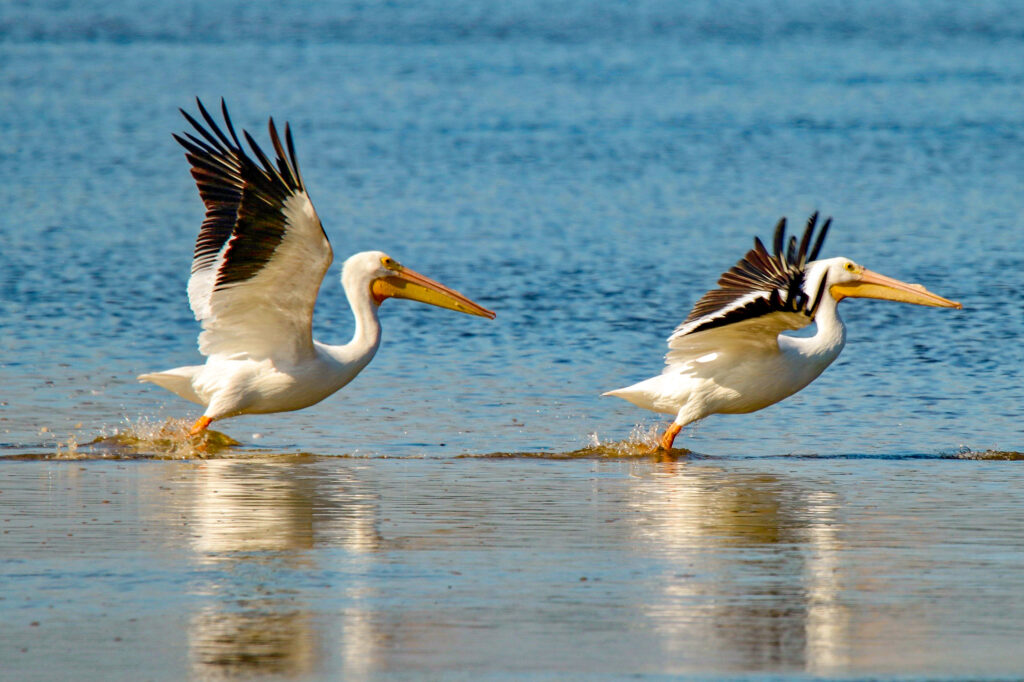
Pelican
parents often fish for their young and bring food back to the nest.
©Susan Rydberg/Shutterstock.com
The American white pelican is most commonly found along North Carolina’s coast during winter. However, a few can be spotted here and there throughout the year. They are one of the largest birds in North America and can be a startling sight when you find them perched on boardwalks. But also look for them in the skies while they travel in flocks.
2. American Oystercatcher
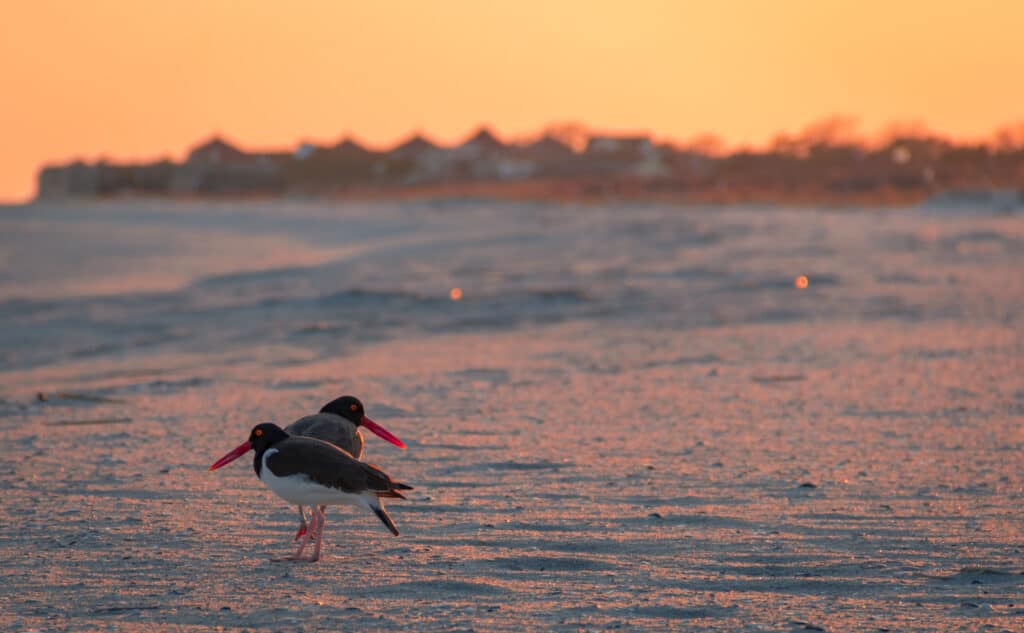
American oystercatchers live in North Carolina year-round
©iStock.com/Rabbitti
The American oystercatcher lives along the state’s coastline year-round, where you will find them on barrier beaches and salt marshes. You most likely won’t find them during high tide. They wait in remote roosts until the tide rolls back, then they descend upon their feeding grounds, where they eat oysters, clams, and other mollusks.
3. Semipalmated Plover

semipalmated plovers live along the coast during winter
©Dee Carpenter Originals/Shutterstock.com
While the semipalmated plover can be found in inland ponds and muddy farms, they also forage with shorebirds. And in North Carolina, you can find them along the coast during the winter. You may even see them migrating during spring and fall throughout the rest of the state. On the beach, they stick to sandbars rather than rocky areas.
4. Least Tern
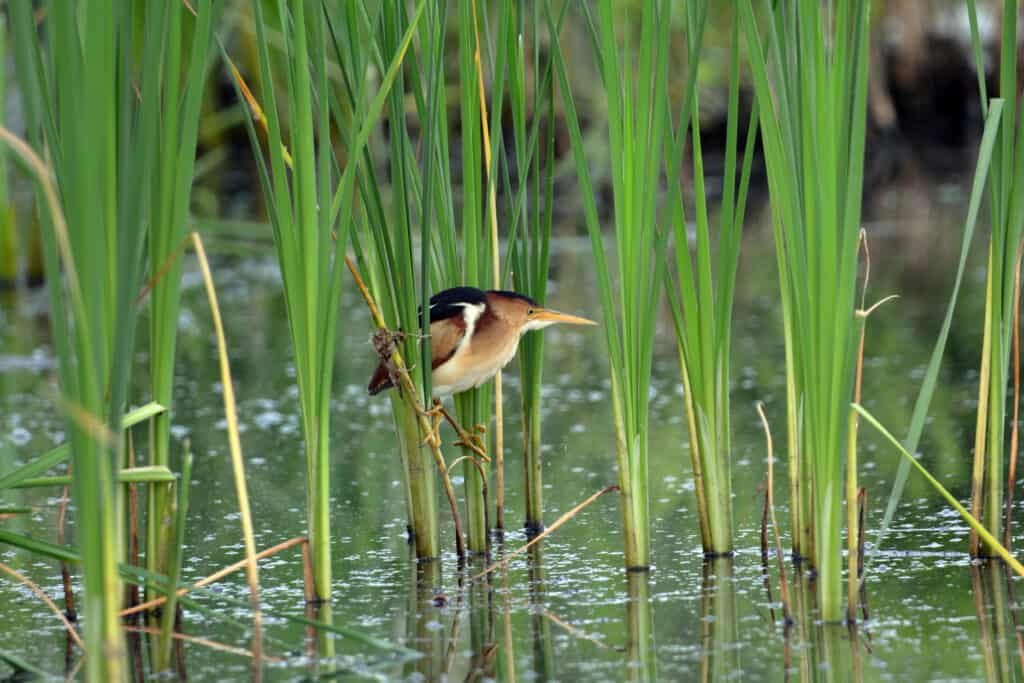
Least terns frequent sandy islands
©iStock.com/Carol Hamilton
The least tern is a breeding bird along Carolina’s coastline. They are the smallest species of terns and one of the noisiest shorebirds, especially in their breeding colonies around coastal waters. You may even see these breeding areas roped off on some of your favorite beaches. And they love to frequent sandy islands, outer beaches, and the roofs of coastal towns.
5. American Avocet
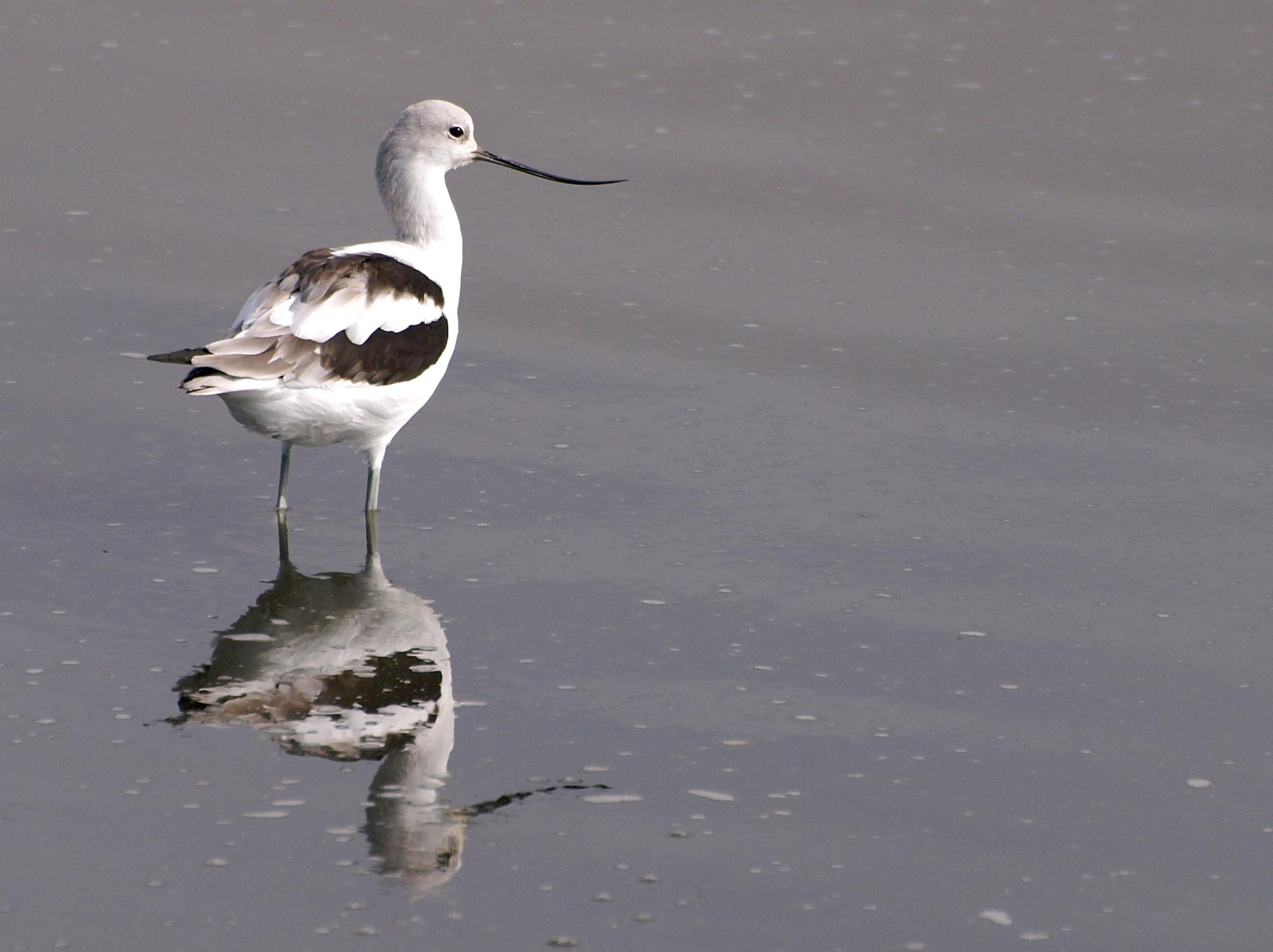
American avocets forage in shallow coastal waters
©Ingrid Taylar from San Francisco Bay Area – California, USA, CC BY 2.0, via Wikimedia Commons – License
This elegant wetland bird winters along the Carolina coast. They wade through shallow water and swish their long bills from side to side under the water to catch their prey (mostly invertebrates). You can find them foraging in coastal water, often standing on one leg. In the winter, you can find them in lagoons, salt ponds, and mudflats.
6. Osprey

Ospreys eat live fish by diving into the water to catch their prey
©Gregory Johnston/Shutterstock.com
Osprey are large hawks that are abundant throughout North America. They eat live fish and dive underwater to catch their food. You will often see them flying over the beach near the shoreline and patrolling for prey. They live year-round along North Carolina’s coast but can also be found throughout the rest of the state during the breeding season. Away from the coast, look for them perched on tall trees around bodies of water.
7. Lesser Yellowlegs
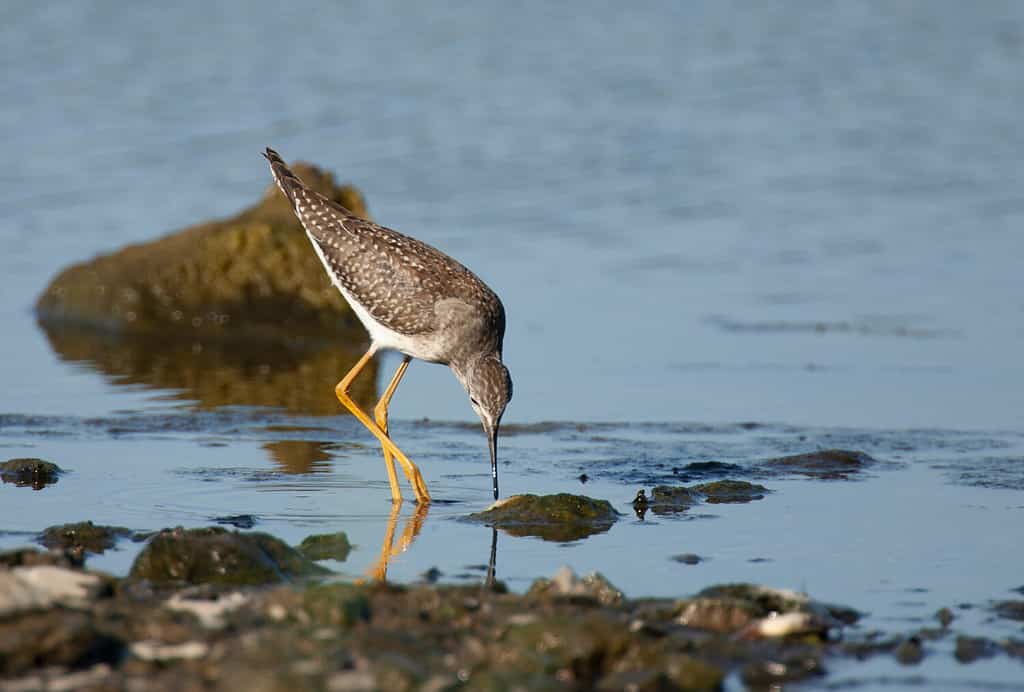
Lesser yellowlegs inhabit coasts and flooded fields
©Dennis W Donohue/Shutterstock.com
These yellow-legged wetland birds spend their winters near North Carolina beaches. And you can find them during migration throughout the rest of the state. They inhabit shallow wetlands with plenty of weeds and other vegetation. These birds are not just associated with beaches; you can find them in flooded fields and pastures. Near the beach, look for them in ephemeral mudflats and shallow marshes.
8. Snowy Egret
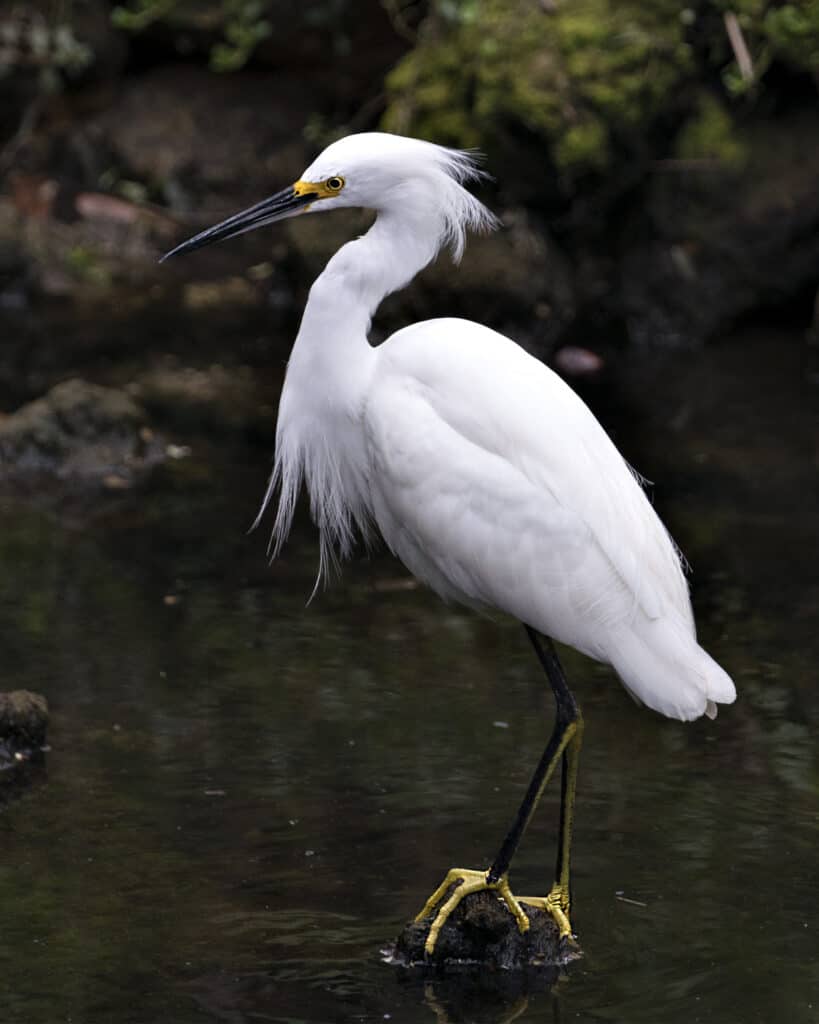
The snowy egret lives on the North Carolina coast year-round
©iStock.com/Rejean Bedard
The snowy egret is a slender heron with snow-white plumage, black legs, and yellow feet. They live year-round along North Carolina coasts, and you can also see them during migration throughout most of the state. You are more likely to find them in tidal wetlands and mudflats in shallow water, where they like to forage. While their populations were once threatened due to the fashion industry, conservationists brought them back, and they are now a common sight in North and South America.
9. Spotted Sandpiper
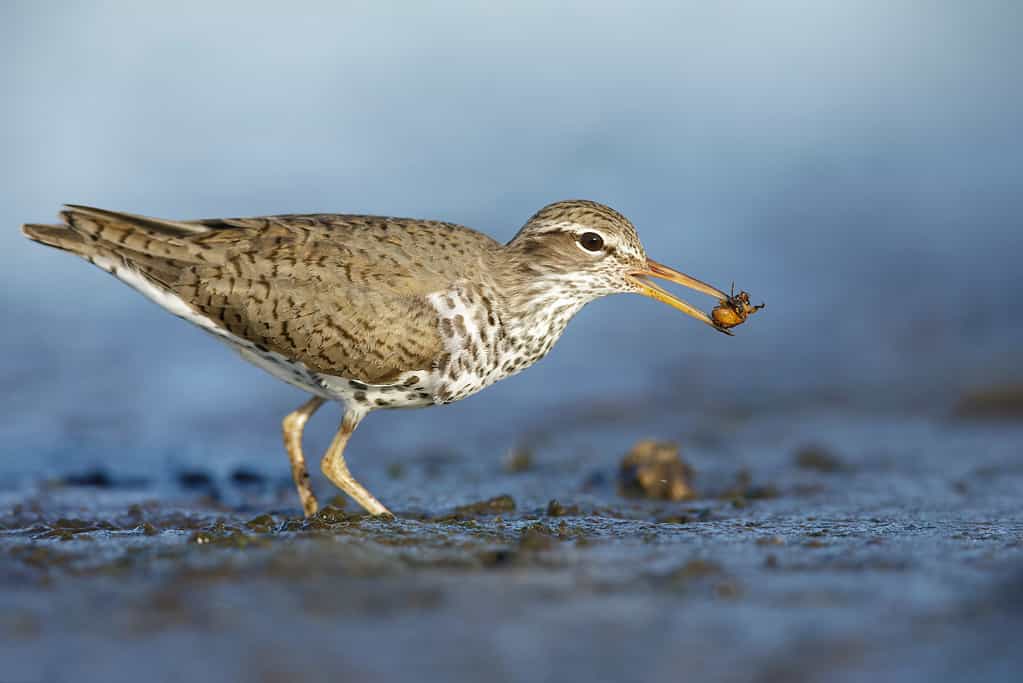
Spotted sandpipers are abundant in North America
©Agami Photo Agency/Shutterstock.com
Spotted sandpipers are abundant in the United States and the rest of the Americas. In fact, they are the most widespread breeding sandpiper in North America. They breed throughout most of North Carolina, including inland regions. They are often associated with shorelines, but you can also spot them along the shores of lakes, streams, and rivers.
10. Willet
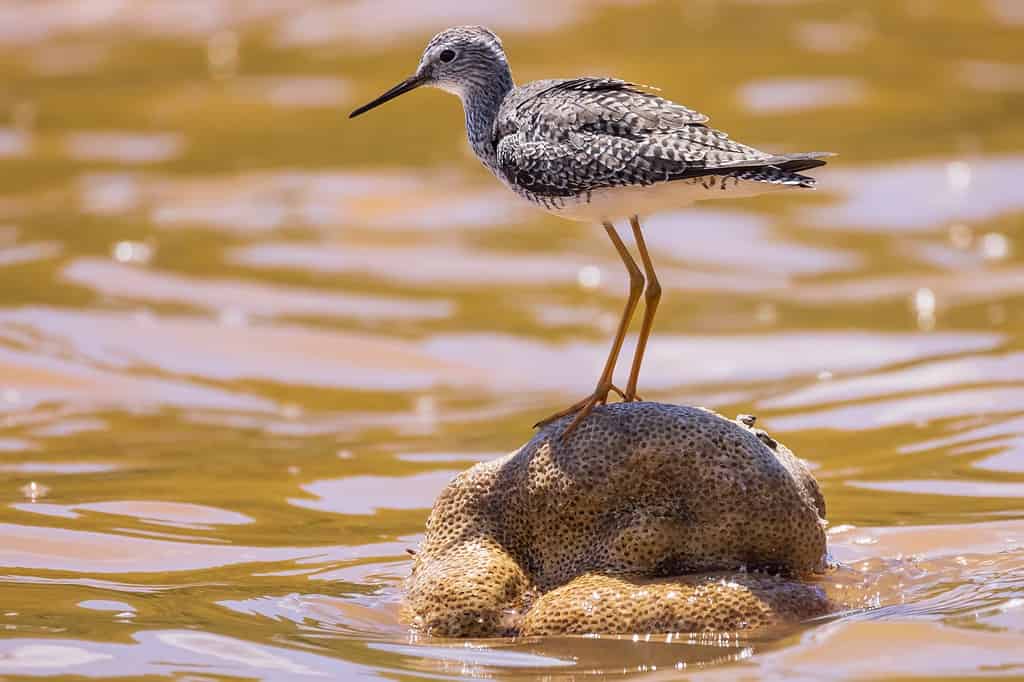
Willets have sharp calls and distinct markings
©BlueBarronPhoto/Shutterstock.com
The willet is a rather distinctive bird on beaches across the United States. They feature sharp calls and black-and-white wing markings, making them easy to spot. Willets feed on the water’s edge and are one of the most common shorebirds in the country. In North Carolina, you can find them along the coast during the winter. And they can be active both day and night.
11. Sanderling

The Sanderling winters along North Carolina’s coast
©Jaclyn Vernace/Shutterstock.com
Sanderlings breed on tundra of the High Arctic and winter along the United State’s coastline. These shorebirds live on the outer beaches and aggressively defend their feeding range along the water’s edge. You can easily spot them by their wave-chasing behavior. If you see a bird running back and forth with the waves, these are most likely sanderlings.
12. Great Egret
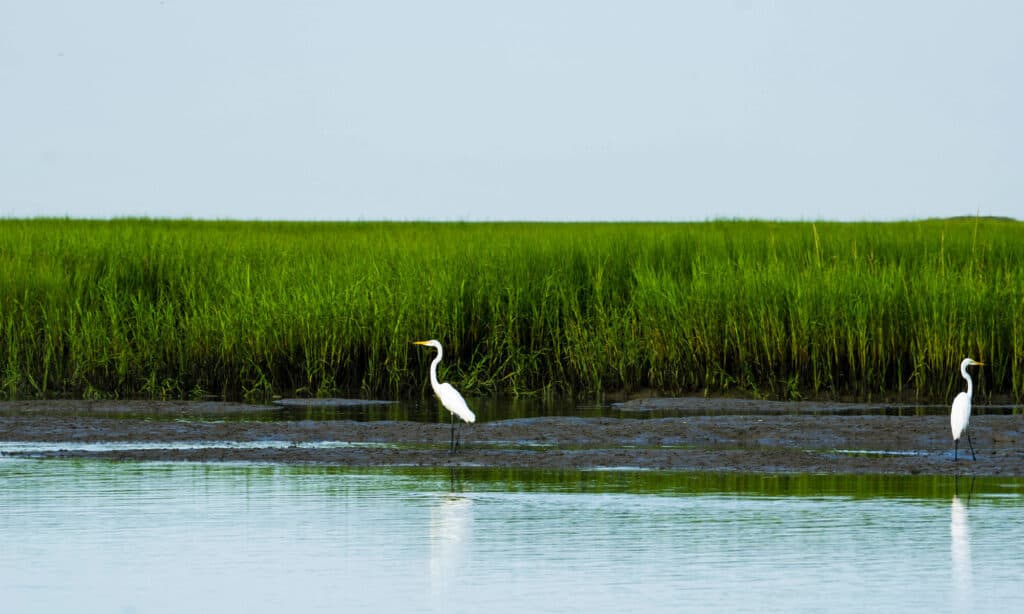
Great egrets is smaller than the great blue heron
©iStock.com/makasana
Great egrets are long and slender birds with impressive wingspans. They live along the North Carolina shoreline year-round, and they also breed in the inland regions of the state. This all-white bird is slightly smaller than the great blue heron, and you can find them near ponds and coastal marshes. They wade in shallow waters, either standing completely still or moving very slowly.
13. Ruddy Turnstone
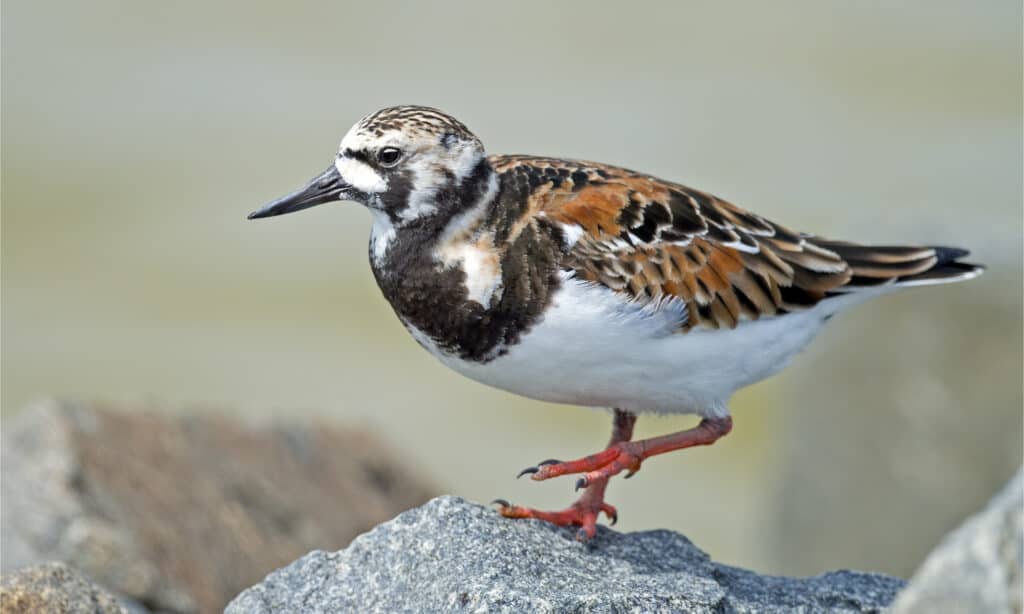
The ruddy turnstone likes sandy beaches and rocky shorelines
©Brian E Kushner/Shutterstock.com
This unique shorebird has easy-to-spot plumage featuring orange, white, and dark brown feathers. Ruddy turnstones are long-distance migrants that breed in Arctic tundra and winter along the United States and Mexican coasts. They like both sandy beaches and rocky shorelines. But you can also find them in inland lakes and marshes.
14. White Ibis
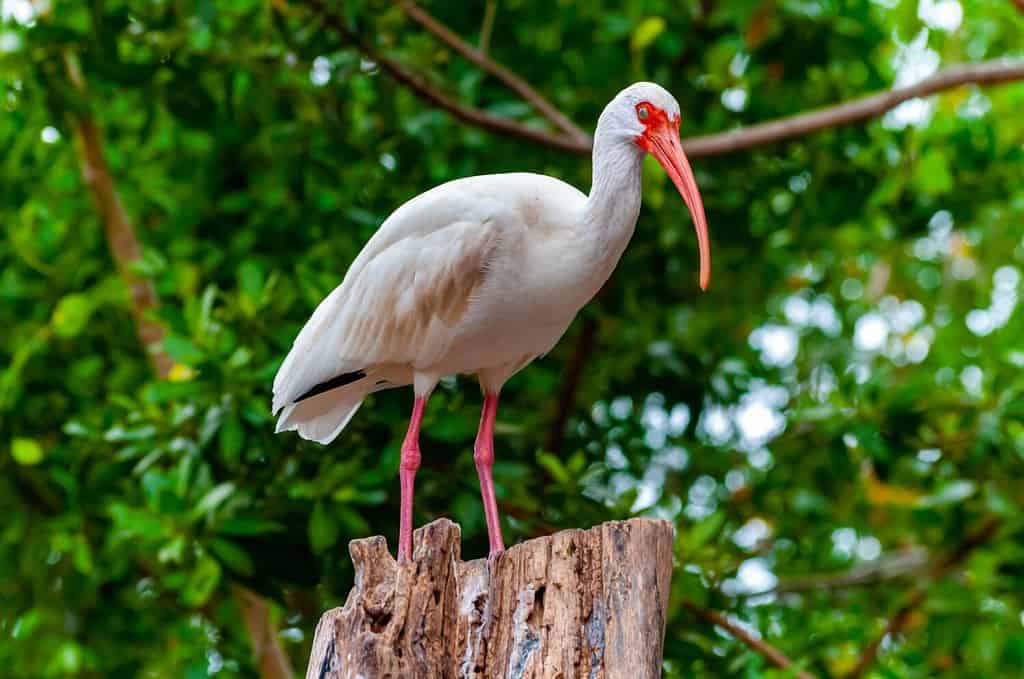
White ibis like shallow wetlands
©Oleg Kovtun Hydrobio/Shutterstock.com
The white ibis isn’t as common in North Carolina as other shorebirds. But you can still find them year-round on southern county beaches. They are wading birds with all-white plumage, long red legs, and long curved beaks. You can find them in groups moving through shallow wetlands. But they also inhabit flooded fields, parks, and backyards. During the breeding season, you can find them nesting in trees or shrubs near the water.
15. Dunlin

Dunlins feed on mudflats, where they look for invertebrates
©Simonas Minkevicius/Shutterstock.com
Dunlins are abundant shorebirds in the United States during winter and migration. They breed in the Arctic and winter along coasts, bays, and estuaries. As the tide falls, these birds feed on mudflats, dipping their bills just below the water’s surface to find invertebrates. In North Carolina, you will find populations near the coast during winter and migrating birds throughout the rest of the state.
16. Forster’s Tern
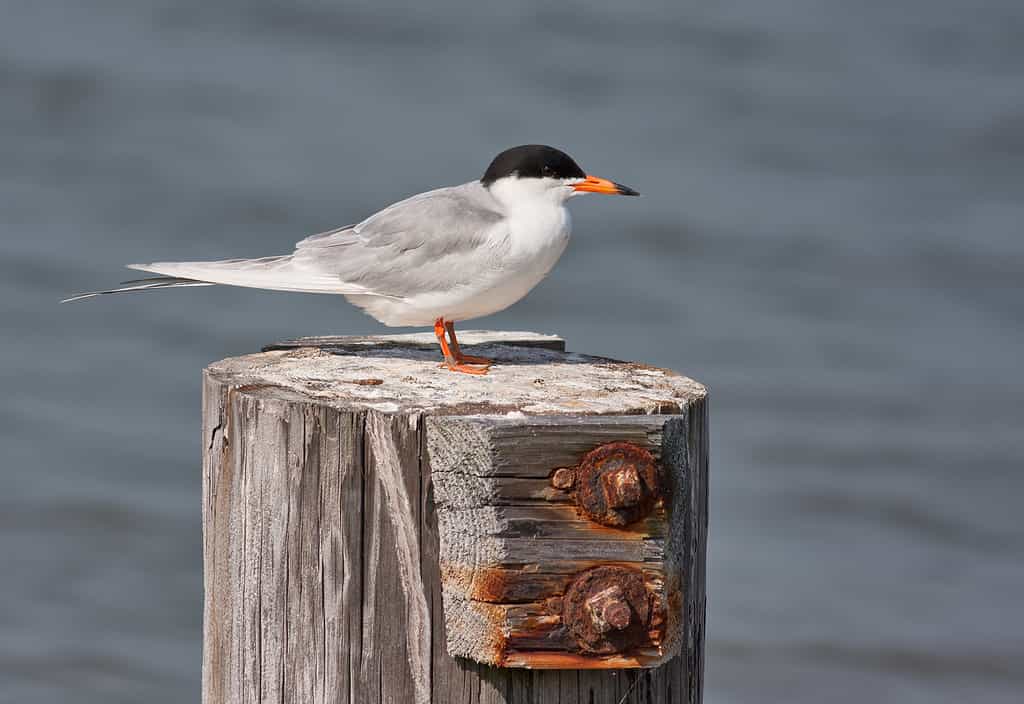
Forster’s terns soar above shallow water near bays and oceans
©Stephen Bonk/Shutterstock.com
The Forster’s tern is an abundant bird along North Carolina shores during the summer. These birds have distinctive black face masks and forked tails. And they spend their time soaring above shallow waters near marshes, bays, and oceans. There are year-round populations of Forster’s terns on the Outer Banks of North Carolina.
17. Least Sandpiper

Least sandpipers are the smallest sandpipers
©Carrie Olson/Shutterstock.com
Also called “peeps,” the least sandpipers are the smallest of the sandpipers. They spend winters in the southern half of North Carolina, where you will commonly find them on mudflats along the coast. However, they are equally abundant in inland bodies of water. You can find them by scanning the sand or mud where they like to forage.
18. Black Skimmer
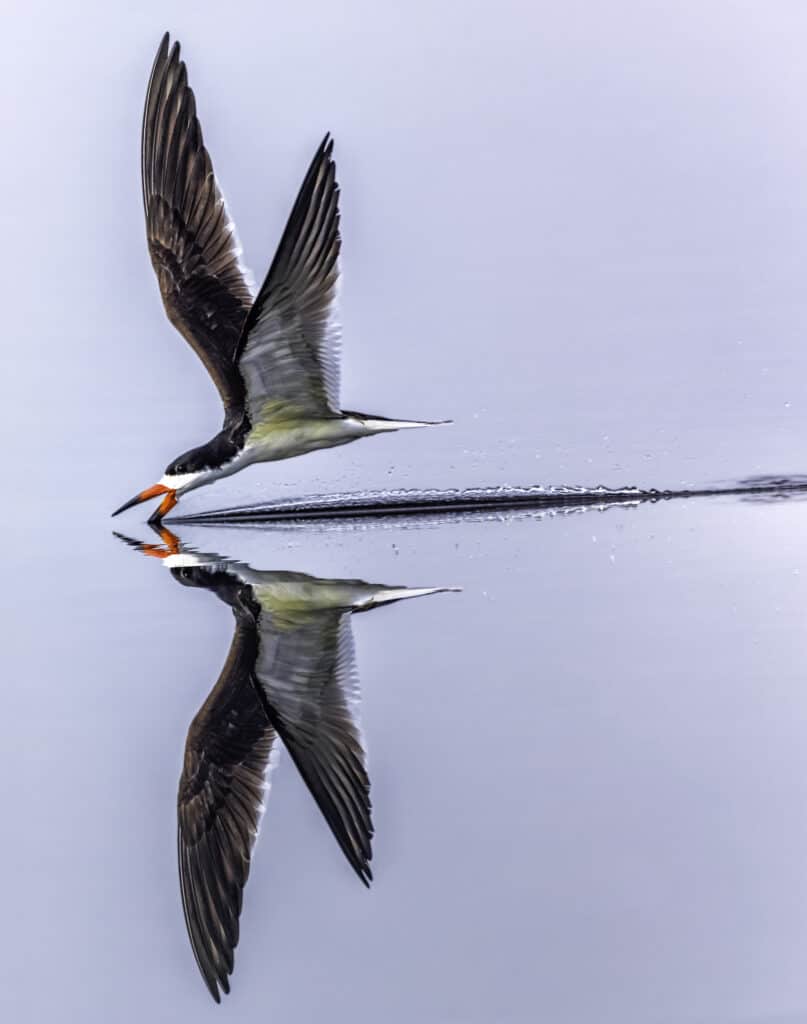
Like their name, Black Skimmer often fly along the surface of the water.
©iStock.com/Natures_Vision
Black skimmers are primarily South American birds. But they have breeding and some year-round populations along the coast of North Carolina. They are most notable for their long wings and long orange and black bills. They like to frequent barrier islands and beaches, where they fly low over the water, skimming the surface for food.
19. Wilson’s Snipe
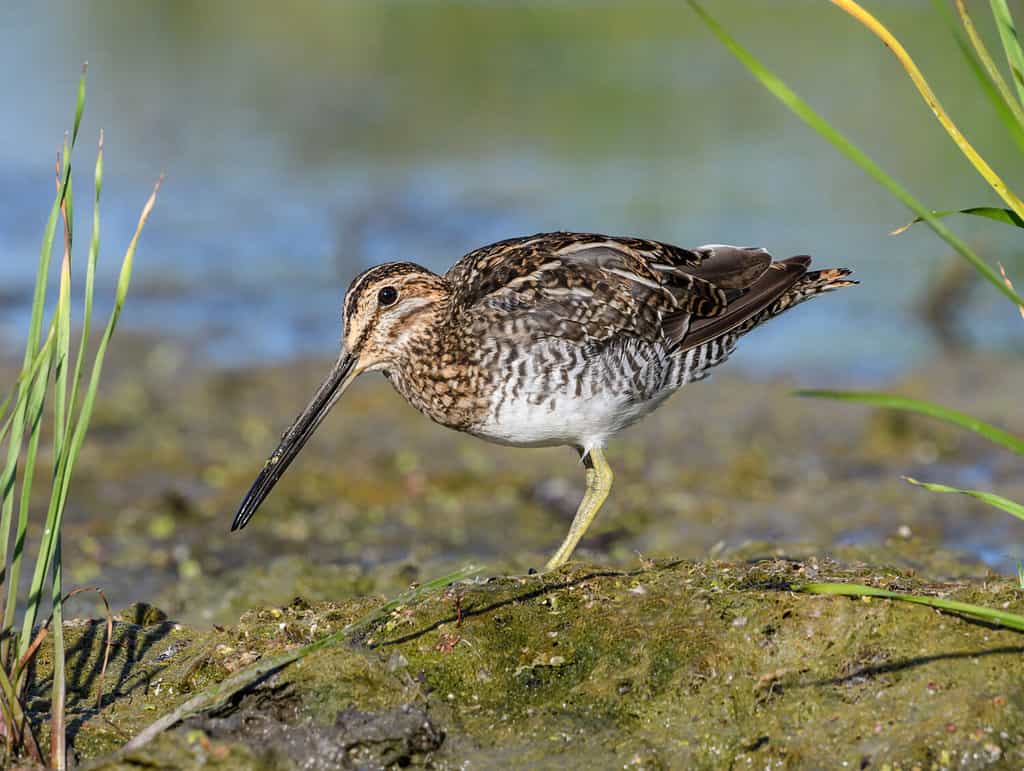
The Wilson’s snipe winter along North Carolina’s coastline
©FotoRequest/Shutterstock.com
Wilson’s snipe is a plump shorebird with a large bill. They can be difficult to spot due to their brown plumage that easily blends with their environment. Plus, they can be very secretive. These birds spend winters throughout North Carolina, including the coastline. They live in most wetlands and like to perch on fence posts.
Summary of Birds You’ll See along North Carolina’s Coastline and Beaches: A Recap of the Most Common 19
| Rank | Birds |
|---|---|
| #1 | American White Pelican |
| #2 | American Oystercatcher |
| #3 | Semipalmated Plover |
| #4 | Least Tern |
| #5 | American Avocet |
| #6 | Osprey |
| #7 | Lesser Yellowlegs |
| #8 | Snowy Egret |
| #9 | Spotted Sandpiper |
| #10 | Willet |
| #11 | Sanderling |
| #12 | Great Egret |
| #13 | Ruddy Turnstone |
| #14 | White Ibis |
| #15 | Dunlin |
| #16 | Forster’s Tern |
| #17 | Least Sandpiper |
| #18 | Black Skimmer |
| #19 | Wilson’s Snipe |
The photo featured at the top of this post is © Jerek Vaughn/Shutterstock.com
Thank you for reading! Have some feedback for us? Contact the AZ Animals editorial team.






